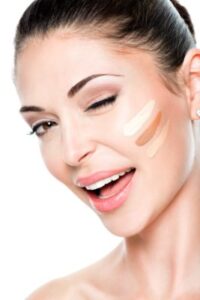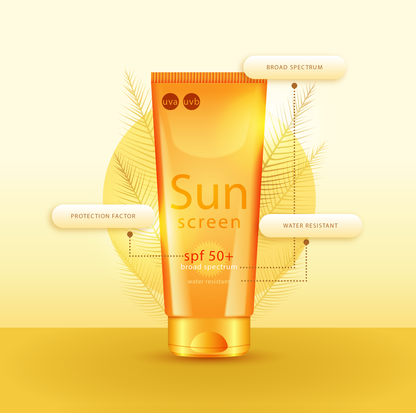
Introduction
Although many of us prefer summer more than winter, that doesn’t mean we don’t wait for summer to go on a holiday to the beach or to go basking in the sun, excited to get that bronze tan. But is it without consequence? While others are packing their bags and rushing to get sunscreen, which is only thought to be used during beach vacations. They enjoy the peace and serenity of the beach whether they’re sleeping, reading books, or just sitting under the umbrella, listening to the crashing of the waves, while covering themselves in what almost looks like a whole tube of sunscreen. Which type of person are you? Is sunscreen only for the beach?
We had so much fun at the beach and must now go back to our work and responsibilities, waking up in the morning and returning at the end of the day, starting to think of all the duties the day will hold. Do you diligently apply sunscreen every morning before leaving your home, or does it barely pass your mind while you’re planning the day?
Have you ever thought about the importance of sunscreen and why we need to wear it every day while we are leaving our homes, whether to exercise, go to work, or if it’s your day off and you are going out to have fun? Long exposure to the sun although, has its benefits, can cause some harm.
At some point in the day, we all see many ads that show different brands of sunscreen with different levels of SPF and either ignore them or try hard to skim through the ads to figure out which is suitable but get frustrated with the endless options available. Just which is suitable for me and my skin type?

The Sun
Let’s start by learning more about the sun, its benefits, and harms, and why using sunscreen is essential to protecting our skin.
The sun is responsible for maintaining all living organisms on the planet, like humans, plants, animals, the weather, etc. Two of the most essential elements we are provided with are heat and light. The sun is heated by the energy produced by nuclear fusion reactions at its core, and a part of this energy is emitted from its surface as light, ultraviolet light rays, and infrared radiation, which provides most of the energy to the earth.
There are three types of ultraviolet light rays, which are UVA, UVB, and UVC. UVA has the longest wavelength, so it penetrates the earth’s atmosphere and reaches the dermis layer of our skin. This type of ray is always there. UVB has a shorter wavelength than UVA but still reaches the upper layer of the skin, which is the epidermis. This type of ray causes the most damage and has the most energy but is scattered. Finally, UVC has the shortest wavelength and is absorbed by the earth’s atmosphere.
Is there no benefit to sun exposure?
Families and friend groups usually like to gather on weekends and take their children to the park to go have a picnic or even go to the amusement park and boost their mood after a long week of work and responsibilities. We try our best to look for shaded areas, umbrellas, and tall plants to take shelter from the sun under, but that search is not always fruitful. Sun exposure is, of course, essential for the absorption of vitamin D into the body of people, especially young children, as it helps the development of their bones. Without vitamin D, our bones may start thinning and be more susceptible to breaking. Not only that, but it also helps us keep our sleeping pattern on track. We stay awake during the day and sleep at night.
Finally, a point we fail to recognize is the fact that the sun can brighten up our mood. Sometimes we can’t wait for the day to finish and go home without realizing that going out or even just opening the window has a huge effect on our mental wellbeing. Exposure to sunlight is thought to increase the brain's ability to produce serotonin (the happiness hormone). Places that have a short day or where the weather is usually dark and cold increase the risk of depression.

The effects of prolonged exposure to the sun
Not all sun exposure is bad. However, prolonged exposure without any precautions or skin protection comes with its own risks. There are also people who have a higher risk, such as those who work for long hours in the sun and those who have light skin color, hair, and eyes. Also, people who take medications or use topical products may have increased skin and eye sensitivity. It is preferable to visit a doctor if you notice any abnormalities in your skin. Here are some types of damage caused by overexposure to the sun: Sunburn (red, inflamed, itchy, tight, warm-to-touch skin, nausea, dizziness), premature skin aging or photoaging (wrinkles and fine lines), hyperpigmentation (dark areas, spots, or all your skin), and skin cancer.
Many of us think we would get wrinkles or spots on our skin when we start to grow older, but that is not the only factor that causes changes to our skin. Let us talk more about photoaging, which is caused by overexposure to the sun’s ultraviolet light rays. Our skin consists of three layers, which are the epidermis, dermis, and subcutaneous layer. The epidermis contains melanin, responsible for our skin color. Then we have the dermis, which contains the sebaceous glands, hair follicles, and fibroblast cells that produce collagen (responsible for strength and healing) and elastin (responsible for the skin’s elasticity). Finally, there is the subcutaneous layer, which contains a fat layer to protect our muscles and bones from bumps and falls, blood vessels, and nerves. The UV rays cause damage to the dermis layer as they breakdown collagen in the skin, which in turn prompts an increase in the production of elastin. The elastin then produces enzymes to help recover and rebuild the collagen, but sometimes these enzymes don’t work properly and rebuild poor-quality collagen. This results in improperly rebuilt skin. This process repeats every day as our skin is exposed to UV rays, which is what causes the formation of wrinkles, fine lines, freckles, changes in skin texture, different color spots or patches, loss of elasticity, etc. This is what causes people to look older than their actual age and why we have to deal with sun exposure differently.
How do we protect our skin?
There are many ways available to protect your skin that are not limited to a certain age. It is always preferable to protect your skin, whether it’s for children or adults. All skin types need protection from UV rays. Here are some points you can follow and integrate into your daily routine.
Don’t overexpose yourself to the sun
5 to 15 minutes per day is enough for your body to get vitamin D. You can also find vitamin D in certain foods and in supplements. If you don’t know your vitamin level (deficiency, sufficiency, insufficiency, or hypervitaminosis), contact a healthcare professional to have a blood test taken and know what you need to do.

Stay in shaded area
These areas could be indoor or outdoor. This is especially needed when the sun is at its peak, which is when you can barely see your shadow or when the length of your shadow is shorter than yourself.

Use an umbrella
If you must stay outdoors or even want to be outdoors but can’t find a shaded area, then you can go ahead and get your own shading.

Wear clothes that cover all your skin (including arms and legs)
This is to prevent the ultraviolet light rays from reaching your skin.
Start wearing hats)
Find hats that provide shade for your whole head

Use sunscreen
The layer of sunscreen we apply to our skin acts as a shield that absorbs or reflects UV rays. It must always be used daily, even on cloudy days since ultraviolet rays can penetrate it and reach your skin. The sun is at its peak, usually from 10 a.m. to 4 p.m., hence, it is advisable to apply sunscreen during these times.

Do you really need a tan?
Many of us feel the need to get a tan, usually when we go on a holiday to the beach and sit for long hours in the sun without protection or covering up. The tan will not last, but the damage will. Avoid tanning beds too, since they use ultraviolet light rays as well. You are beautiful as you are! However, if you still feel the need to get a tan, how about going for the alternatives, such as using tinted sunscreens or even achieving it by using makeup?


Some tips to follow when choosing your sunscreen
When looking for sunscreen, you must choose a broad-spectrum sunscreen that is water-resistant and has the highest SPF you can find. Apply enough to cover all exposed areas of the skin 15 to 30 minutes before you leave your home. Reapply every 2 hours and more frequently if you are going swimming or after sweating since sunscreen doesn’t last against water and sweat.
Broad spectrum means that it protects the skin from both UVA and UVB rays.
Water resistant means they will hold on longer and better against water and sweat.
SPF stands for sun protection factor. It is a measure of how well it protects your skin from the UV rays (e.g., if the sunscreen is SPF 30 and it takes your skin 20 minutes to burn, then using the sunscreen will slow the rate and instead it will take 30 times longer for your skin to burn). Don’t forget to check the expiration date of your sunscreen to maximize its benefits.
Look for sunscreen that matches all these points as well as being suitable for your skin type.
Prevention of damage is always thought to be the best line of action, but that doesn’t mean there aren’t a variety of products or solutions to deal with damage already done. Every case, of course, will need a different follow-up plan for treatment, like oral medications or topical products, and in some cases, procedures need to be done, so it is advised that you visit your dermatologist to agree on the plan.

